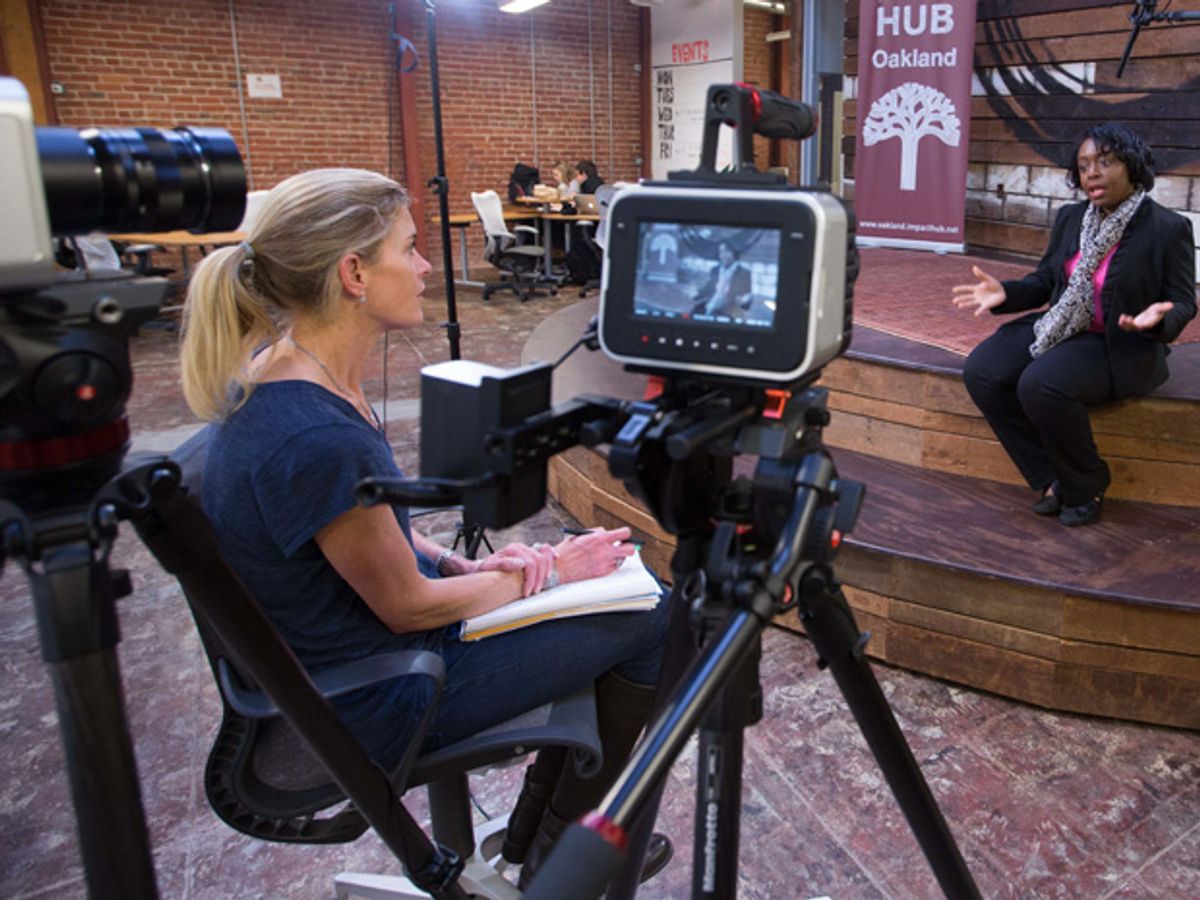Code: Debugging The Gender Gap is a documentary with an ambitious mission. It asks why there are relatively few female programmers, explores the consequences of this state of affairs, and examines some attempts to increase their numbers. The film, which premiered in April at the Tribeca Film Festival in New York City, is intended to be the centerpiece of educational programs in schools and corporations. It features interviews with many notable female (and some male) coders, educators, and policymakers.
Code opens by pointing out that in the early days of programming, women dominated the field. This was in no small part because male engineers thought this “soft” work was relatively trivial compared to building actual machines such as ENIAC. And in the decades that followed, more and more women entered computing: by the mid-1980s, women made up more than 35 percent of computer science majors in U.S. colleges. Then began a falloff that persists to this day, with U.S. computer science majors being about 15 percent female.
Why the decline? Code alludes to the introduction of the trope of the male whiz-kid hacker in 1980s popular culture, as exemplified in movies such as WarGames and Weird Science, and the rise of video games targeted at boys. But the documentary is far more interested in how current popular, educational, and corporate cultures—especially Silicon Valley’s—discourage women from being programmers and fail to recognize the female talent that is available. “It’s human nature to be able to identify with someone else who is like us. That’s why startups tend to hire other white 25-year-old men—‘Oh, you went to Stanford? I went to Stanford!’ ” explains Robin Hauser Reynolds, the director and coproducer of Code.
Code paints a grim picture of the results, with so-called brogrammers creating unwelcoming workplaces; any woman who complains can expect backlash. This leads to the fundamental tension in the film: It’s trying to portray the real problems women face, while still urging girls and women to enter the field. “This was our biggest challenge,” says Reynolds. “There are a lot of women in tech who would not be very happy with us if we skirted those issues.... So how then do you do that, and yet encourage women and young girls to want to go into coding?” A key part of Reynolds’s strategy was to show female coders who are happy in their work, including women working in places other than the stereotypical startup. “That’s why it was so important for us to show Danielle Feinburg, [a director of photography] at Pixar,” says Reynolds, “and to really talk about how collaborative and creative the space can also be.”
I was surprised that Code made no reference to Gamergate, the ongoing online farrago that began last August, ostensibly about “ethics in gaming journalism.” It has in fact been dominated by a relentless campaign of attacks on female game developers, including Zoe Quinn and Brianna Wu, and others. Reynolds says that Gamergate occurred too late in the making of the movie for her team to really delve into it: “It’s better to take an issue and drill deep rather than become too broad and sort of be a grab-bag film.... We really felt as though we wouldn’t be able to do [Gamergate] justice, to do it quickly.”
When it comes to solutions for reducing gender disparity, Code argues that computer science courses in primary and secondary schools should be universally available, so that girls don’t fall behind the informal education that boys are more likely to receive. At the other end of the pipeline, companies should think beyond their conventional hiring practices. Etsy, the (sometimes controversial) online craft marketplace, is prominently featured for significantly increasing the share of women on its development staff by sponsoring a local educational program that has acted as a feeder for recruitment.
Code doesn’t have all the answers, of course. But ultimately, it does make a good case that everyone should think deliberately about diversity in their hiring.
This article originally appeared in print as “Code: Debugging the Gender Gap.”
Stephen Cass is the special projects editor at IEEE Spectrum. He currently helms Spectrum's Hands On column, and is also responsible for interactive projects such as the Top Programming Languages app. He has a bachelor's degree in experimental physics from Trinity College Dublin.



